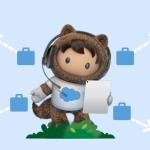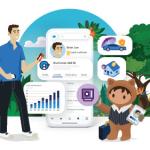Customer-Driven Relationships: Why They’re Important and How to Build Them

Marketing should not be just a single step in your strategy. It needs to be integrated across the customer journey. The result is a truly seamless experience for both your customers and your team.
Allow me to be a little blunt: businesses reflect their org chart to the customer way too often. Every interaction with a different department feels like a new starting point and reintroduction to the brand. That makes for a frustrating experience because the customer has to rewind to the beginning every time they engage with the brand. It’s the business version of the movie Groundhog Day. The solution to this very common problem is building a system for customer-driven relationships.
Customer experience marketing is the engine for this new system. Traditionally, many companies have thought of marketing as an introductory step in the customer journey. We find and attract audiences and then hand things over to commerce, customer service, sales, to finish the job. Simply put, that doesn’t work anymore. Now companies need to focus on keeping customers engaged throughout the journey – a journey that the customer dictates by the channels they choose to engage with and the data they choose to share.
Now hear me out. I know there are a number of different titles that can be used for the role I’m describing. It may be a Chief Experience Officer or a Chief Digital Officer where you work, or something similar. But for simplicity, I’m going to call the the position marketer in this blog.
Marketers must be able to take a non-linear approach and engage each customer in the ways that are important and relevant to them. And every single team that’s responsible for building customer-driven relationships – marketing, sales, commerce, and service – needs to work together in lockstep. You need seamless handoffs between these internal departments, which in turn create a better experience for each customer. To do this well, you have to be equipped with both the right process and the right technology.
The good news is recent innovations in data and AI have been game-changing, opening up new ways to know our customers across our brand, making our teams more cohesive, and personalising engagement in consistent ways. Companies are figuring out how to better use new technology to get closer to customers. A proper marketing technology solution can reduce complexity and help you not only move someone from prospect to customer, but also make sure you’re cultivating the journey past the conversion.
Let’s look at how you can build a strong strategy for customer-driven relationships.
What you will learn in this blog
What are customer-driven relationships?
Customer-driven relationships help businesses build long-term satisfaction and loyalty by engaging customers on their terms and being a value multiplier across the entire customer experience. Non-linear touchpoints are the new normal for marketing. No matter how the customer engages with the brand – whether it’s through customer service, sales, or commerce – marketing steps back in to keep the communication going and makes sure the customer gets what they need.
Traditionally, marketing has focused on the top of the funnel (awareness and acquisition). However, businesses are finding that marketing needs to break free of this approach and stay engaged with prospects and customers as they progress to keep them informed, engaged, and growing.
Let’s look at an example of how this can work for a marketer at an auto company. A family is thinking about buying a new car and browses your brand’s website. The engagement on the website provides rich customer profile information, even from an anonymous browser. With that first-party data, you can then engage the family at the top of the funnel with online and social ads as they continue their research.
That leads to them signing up for an email list, and your marketing team follows up with more information (and maybe a deal) over the next few weeks. The family thinks it over and reaches out to a salesperson. But as a marketer, your job is not done.
Through high-scale automation, you continue to engage the prospect through the sales process, constantly remarketing to keep them fresh. You don’t stop after the conversion either. Maybe they need customer service for their vehicle. The system automatically gets a notification that the service has been completed and jumps back in with relevant follow-up content after the case has been resolved.
You can’t expect marketing to be done in one channel anymore. Conversion and long-term loyalty often happens over multiple channels and at the pace the buyer prefers. So it isn’t a linear process where one department does their part and is done for good. It’s a fluid situation in which all teams are in sync with the same up-to-date data and can build upon each other’s work.
How can marketing, IT and customer experience converge?
Marketing has traditionally operated under a ring-fenced budget – that’s to say the money is used only for marketing projects and doesn’t extend to other lines of business. Many marketing departments have actively avoided collaborating with IT because they don’t want to slow down their plan and wish to avoid conflict. However, customers often don’t find success because of the lack of cross-departmental coordination.
There’s a lot of value in making this internal relationship work better together. Enterprise data lakes and warehouses contain vast amounts of important customer data. Data science teams have valuable insights into customer’s propensities, risks, and opportunities. AI teams are building out scalable processes for using generative AI in an enterprise-safe way.
One of the traditional barriers to a strong integration between marketing and IT has been that these multiple data sets across a business are siloed. How many times have we seen IT solving this problem with data lakes but marketing not being able to get a real-time consolidated view? The answer: a lot.
This barrier is now being broken down with new technologies like zero-copy for data and artificial intelligence. Zero copy technology allows marketers to access data that’s housed in different locations without having to move or reformat it. And, it can be used by marketers without backend IT help. This allows them to use enterprise data and insights with greater ease and cost efficiency. Now marketing and IT are able to work in harmony.
Seamless handoffs aren’t just for quarterbacks and running backs anymore. You can (and should) make them part of your organisation as well. The result will be a connected system that uses data and AI to keep alignment and engagement strong over the long term. These customer-driven relationships will benefit your business and your customers alike.
Click here for part 2 of this blog.
How to unify your data with zero-copy technology
Learn how to bring together customer and business data in Salesforce and Snowflake to power differentiated experiences, ultimately driving growth for your business.

























